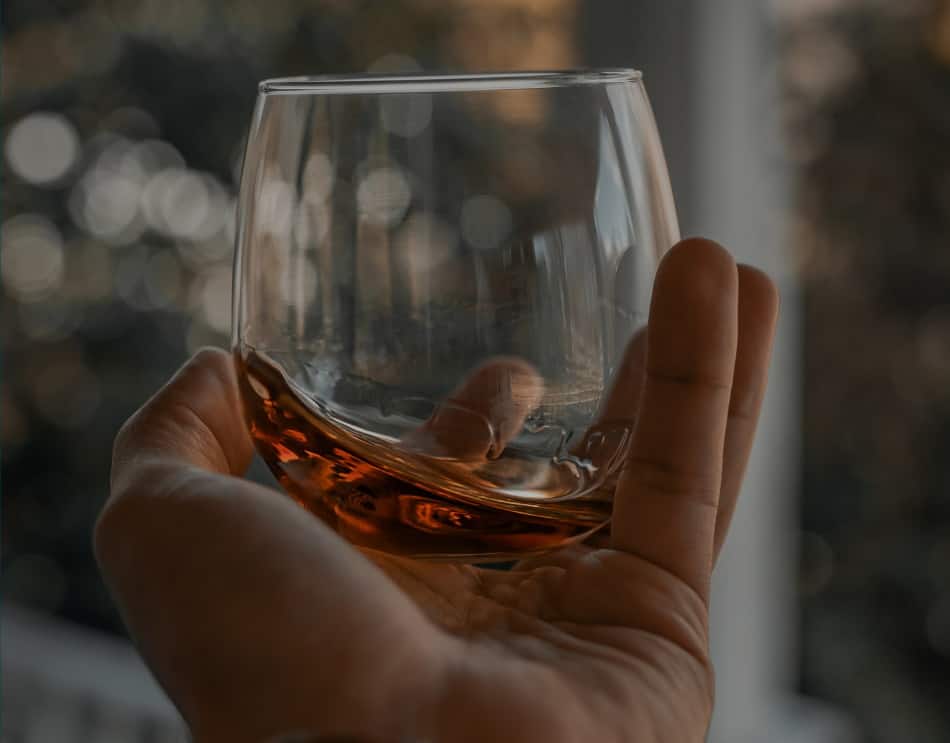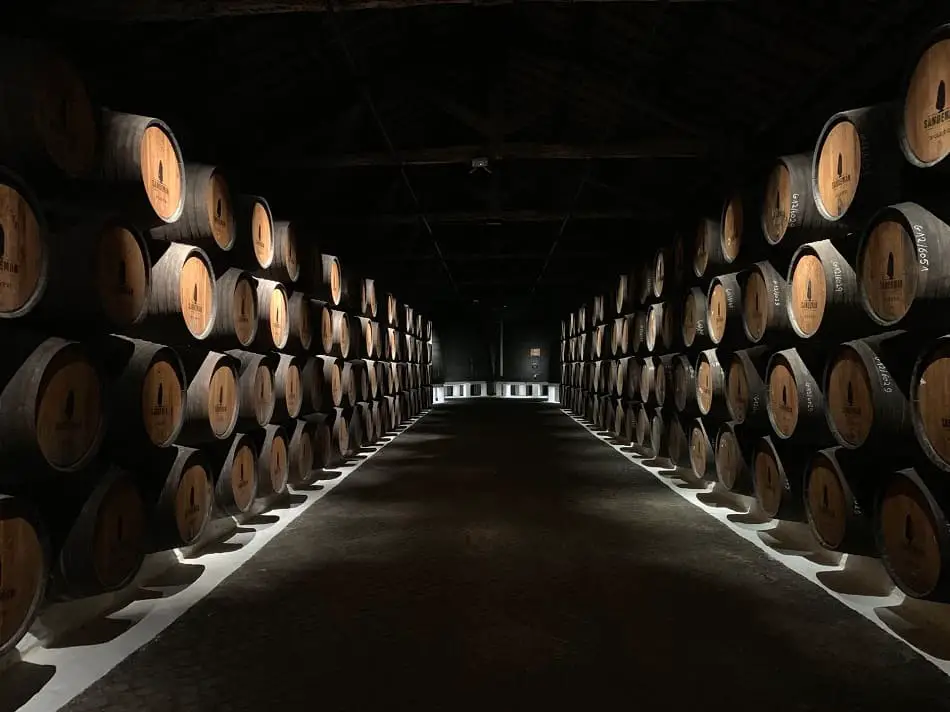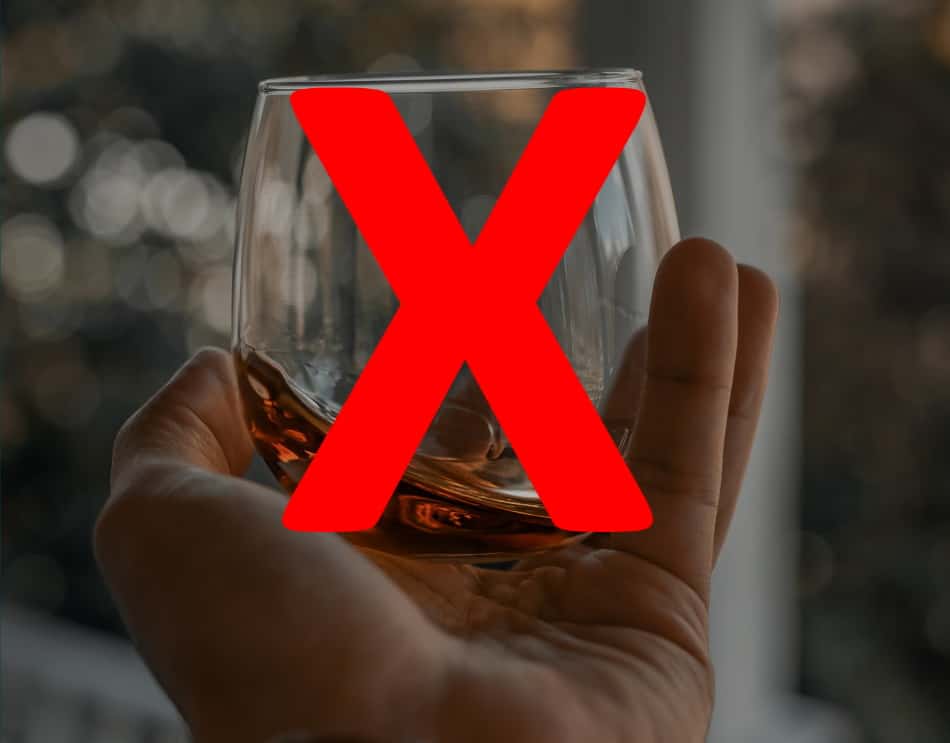My first impression of a whiskey is usually from its color, although it’s never more than the simplistic if it looks good / bad it must taste good / bad too, and even then, I’m often wrong as I discover the whiskey is better or worse than I thought it would be judging by its color. That’s why I decided to find out exactly what you can tell about a whiskey just from its color.
A whiskey’s color can tell you several things about how it was matured, how flavorful it will be and even some of the specific flavors it will have. However, one color can mean several different things, so judging a whiskey by its color is only an educated guess. And it also only applies to whiskeys with a natural color.
In the rest of this article, I’ll explain precisely what different colors tell you about the maturation process and flavor of your whiskey so that by the end, you’ll be able to look at a whiskey and make specific predictions about it – and sometimes you’ll even be right.
We’ll also take a look at what you can’t tell about whiskey from its color and the big problem with judging a whiskey by its color (added coloring) and discuss what you can do about it.

Why You Can Tell So Much from A Whiskey’s Color
To make it easier to judge a whiskey by its color it’s important to first understand why you can tell so much about a whiskey from its color. I mean being able to make a simplistic evaluation from a whiskey’s color like the one I mentioned earlier is quite reasonable. If something looks good it’s likely to taste good and if it looks bad it’s likely to taste bad. It’s not always correct but it’s a good initial assessment that we do all the time with all food and drink.
But to suggest we can tell how a whiskey was matured or even what flavors it will have just by looking at its color, doesn’t seem possible. Surely all those people who examine the color of their whiskey and then make declarations about the type of barrel it came from and the flavors they expect to find are just being pretentious?
Well yes, they are. But if they know what they’re talking about they may be correct too.
That’s because a whiskey’s color, maturation and flavor are inextricably linked. Barrel maturation is when a whiskey picks up most of its flavor but it’s also when a whiskey picks up all of its color.
You see, whiskey actually starts off with no color at all. The distillation process strips it of any molecules that could give it color, so it’s a completely clear liquid when it enters the barrel for maturation.
During maturation changes in temperature and humidity cause the whiskey to repeatedly seep in and out of the wood of the barrel and pick up all sorts of chemicals – wood sugars, vanillin, lactones, tannins and other compounds. These chemicals are what gives the whiskey its flavor and its color.
Of course, several aspects of the maturation process vary from distillery to distillery and whiskey to whiskey which is why they can have slightly different colors.
That’s why you can determine several aspects of the maturation process from the color of the whiskey. Since the color was caused by the maturation process, you can tell how a whiskey was matured just from its color.
And since much of a whiskey’s flavor is also the result of the maturation process, you can tell a lot about a whiskey’s flavor from the color too.

What A Whiskey’s Color Can Tell You
Now down to some details. Here’s what the color of whiskey can tell you about the maturation process:
Light Color
The longer a whiskey spends maturing in the barrel the more color it will impart to the whiskey (although you have to take different maturation environments into account as warmer temperatures, more humidity and seasonal fluctuations will cause the whiskey to mature quicker). So the lighter the color of the whiskey the less time it may have spent maturing.
Whiskey with a light color can also mean it was matured in an older, well used barrel. That’s because the more times a barrel has been used and the longer it has spent maturing whiskey the less flavor and color it’s able to impart, either because it has less left to give or because it takes longer to be extracted.
A whiskey with a light color can also mean it was matured in a barrel that was toasted and not charred. Toasting barrels is when they’re heated slowly and gently so the sugars in the oak do not have enough time to caramelize. It causes them to impart lighter flavors and a lighter color.
Whiskeys are often matured in barrels that were previously used to age other spirits. This is done because some flavor from the previously aged spirit remains in the wood of the barrel and now the whiskey will absorb that too. A whiskey with a light color can mean it was aged in barrels that were previously used to age bourbon.
Dark Color
A dark color means the opposite of a light color. It can mean the whiskey was matured for a significant length of time, it can mean it was matured in a newer, less used or even brand-new barrel and it can mean that it was matured in a barrel that was charred and not toasted.
Charring barrels is basically setting them on fire to break down parts of the oak. This creates flavor compounds and makes it easier for the whiskey to seep further into the wood and pick them up. It causes the barrel to impart more flavors and give the whiskey a darker color. The higher the level of char (level three or level four) the more flavors the barrel will give the whiskey and the darker its color will be.
Reddish Color
A reddish color can mean that the whiskey was matured in barrels made from American white oak, which imparts a reddish shade or amber color.
Light Gold Color
A light gold color can mean that the whiskey was matured in barrels made from European oak, which imparts a strong yellow or light gold color.
Auburn Color
An auburn color can mean the whiskey was matured in barrels that were previously used to age sherry.
Pinkish Color
A pinkish color can mean the whiskey was matured in barrels that were previously used to age port.
Now we know what the color of whiskey can tell you about the maturation process, here’s what the color of whiskey can tell you about its flavors:
Light Color
Since a light color can mean that the whiskey was matured for a shorter period of time or in an older, well used barrel, it can indicate that the whiskey will have lighter, more floral or less flavors.
A light color can also mean the whiskey was matured in a barrel that was toasted, so it can also indicate the whiskey will have the nuttiness, sweet notes, light vanilla and toffee flavors that it imparts.
A light flavor can also mean the whiskey was matured in a barrel that was previously used to age bourbon, so it can also indicate that the whiskey will have some bourbon flavors of vanilla, cloves and caramel.
Dark Color
Since a dark color can mean that the whiskey was matured for a longer period of time or in a newer barrel, it can indicate that the whiskey will have richer, more intense and complex flavors.
A dark color can also mean the whiskey was matured in a barrel that was charred, so it can also indicate the whiskey will have the smoky notes (it was set on fire), and flavors of caramel, honey, spice, dark fruits and leather that it imparts.
Reddish Color
A reddish color can mean that the whiskey was matured in American white oak barrels, so it can indicate the whiskey will have the soft, vanilla and caramel flavors that it imparts.
Light Gold Color
A strong yellow or light gold color can mean that the whiskey was matured in European oak barrels, so it can indicate the whiskey will have the darker, spicier and slightly bitter flavors that it imparts.
Auburn Color
An auburn color can mean the whiskey was matured in barrels that were previously used to age sherry, so it can indicate that the whiskey will have some sweet sherry flavors with notes of nuts and dark ripe fruit.
Pinkish Color
A pinkish color can mean the whiskey was matured in barrels that were previously used to age port, so it can indicate that the whiskey will have some sweet port flavors with notes of dried fruit and spiciness.
The following table is a summary of what a whiskey’s color can tell you about its maturation process and flavors:
| Color | Maturation | Flavors |
|---|---|---|
| Light | Shorter amount of time | Lighter, more floral or less flavors |
| Light | Older, well used barrel | Lighter, more floral or less flavors |
| Light | Toasted barrel | Nuttiness, sweet notes, light vanilla and toffee flavors |
| Light | Ex-bourbon barrel | Bourbon flavors of vanilla, cloves and caramel |
| Dark | Longer amount of time | Richer, more intense and complex flavors |
| Dark | Newer, less used barrel | Richer, more intense and complex flavors |
| Dark | Charred barrel | Smoky notes and flavors of caramel, honey, spice, dark fruits and leather |
| Reddish | American white oak barrel | Soft, vanilla and caramel flavors |
| Light Gold | European oak barrel | Darker, spicier and slightly bitter flavors |
| Auburn | Ex-sherry barrels | Sweet sherry flavors with notes of nuts and dark ripe fruit |
| Pinkish | Ex-port barrels | Sweet port flavors with notes of dried fruit and spiciness |
What A Whiskey’s Color Can’t Tell You

I’m sure that you’ve already noticed the problem in judging a whiskey by its color. A given color can mean one of several things or two of several things or even all of several things, so while it may be possible to narrow things down it may be impossible to know exactly which one is the cause of the whiskey’s color.
Things are further complicated by the fact that many whiskeys are matured in more than one barrel, each with different characteristics and each for a different amount of time. More barrels means more variables and a greater likelihood of being slightly mildly completely wrong.
It might be easier to judge American whiskeys by their color as they have to be aged in new barrels, and because they mature relatively quickly, more often than not are aged in one barrel only. Scotch whiskies on the other hand are often aged for far longer and in two, three or four types of barrel, which makes it that more difficult to tell things about them just from their color.
Either way, this shouldn’t put you off trying to judge a whiskey by its color. As long as you remember that it’s pretty easy to get wrong and that your assessment is a sort of educated guess as you choose between the things it could mean, you can often know a lot about a whiskey just from its color.
When You Can’t Judge a Whiskey By Its Color
What should put you off judging a whiskey by its color is that many have added coloring.
As explained earlier, the whole reason a whiskey’s color can tell you something about its maturation process and flavor is because there’s a link between these three things. The maturation process gives whiskey its color and much of its flavor so you can know about the maturation process and flavor from a whiskey’s color.
But this only applies to the natural colors of whiskey that it picks up during the maturation process. If, however, artificial coloring is added to whiskey, then the link between the color, maturation process and flavor will be broken and you won’t be able to tell anything about a whiskey from its color. Apart from its color.
Most distilleries add caramel coloring or E150a to their whiskeys. From their point of view, it’s understandable. Brands want to produce whiskeys with a consistent color which is impossible to do unless you add E150a. They also want to make their whiskies darker because people (somewhat correctly) perceive that as better.
However, this does make things more difficult for those who want to be able to tell things about a whiskey from its color, which is why the practice of adding E150a has caused so much controversy in the whiskey world.
Fortunately, there are still some whiskeys whose colors are natural:
All American whiskeys have natural colors. While most whiskey producing countries allow E150a to be added to whiskey, America prohibits the addition of any coloring.
Several Scotch whiskey distilleries have committed to keeping their whiskey’s color natural:
- Arran
- Balblair
- Benriach
- Bruichladdich
- Edradour
- Glenallachie
- Glendronach
- Glenfarclas
- Glenglassaugh
- Glengoyne
- Glengyle
- Glen Scotia
- Highland Park
- Kilchoman
- Macallan
- Springbank
- Tamdhu
You can also research a particular whiskey to see if it contains E150a. But beware, in many countries brands are not legally obligated to say if they add E150a, so it’s absence on the label does not indicate a natural color. In fact, a good rule of thumb is to assume that unless a brand says a whiskey’s color is natural that it’s not. After all, they would want to say it if they could.
